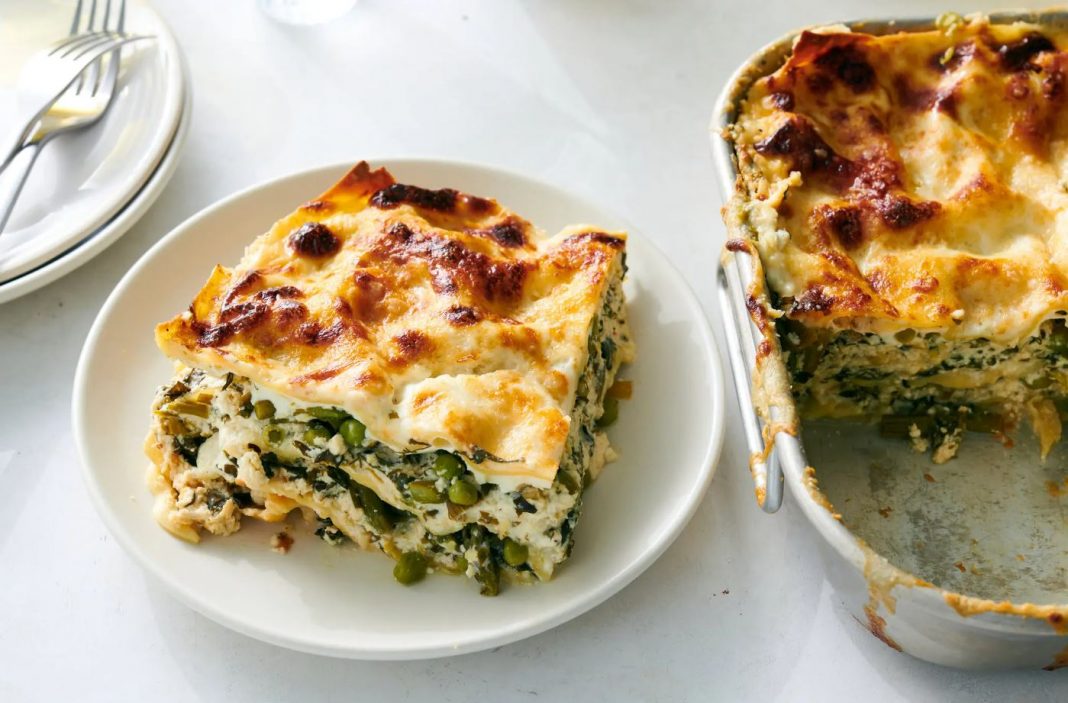Tomato sauce, mozzarella, and ricotta are the three most common ingredients in American lasagna. The large and diverse lasagna family, though, was brought home to me during a recent trip to Italy. There are lasagnas with meatballs and hard-boiled eggs from Naples, chicken liver and ricotta cheese from Le Marche, and Bolognese with béchamel from Emilia-Romagna.
White lasagna, however, was the only one that made me want to immediately break out my lasagna pan when I got home. White lasagnas, which are often made without meat, are luscious, creamy displays of the season’s best vegetables: artichokes in the spring, zucchini in the summer, mushrooms in the autumn and radicchio in the winter.
This variation is reminiscent of spring thanks to the use of leeks, asparagus, spinach, and peas instead of raw artichokes. In addition, the lasagna’s extremely nuanced flavour is a result of the combination of various vegetables used in the dish.
It’s a bit of a labour of love, but it’s worth it. First, prepare the béchamel sauce, then sauté the veggies, and last, layer the sauce, vegetables, mozzarella, Parmesan, Pecorino Romano, and ricotta.
However, the pasta is not made from scratch like in some lasagna recipes. You needn’t go through the trouble of tracking down packaged lasagna noodles. You can avoid the “necessary nuisance” Marcella Hazan calls “cooking, washing, wringing, and drying the pasta” by using dried noodles from the box (either no-boil or regular). The liquid from the béchamel and all the vegetables will cook the noodles as the lasagna bakes. Marcella’s instructions should not be disregarded lightly, yet that much trouble seems unnecessary.
We both believe that making lasagna a day or two ahead of time is OK. Either put it together before your guests come and bake it when they arrive, or prepare it ahead of time and bake it, then reheat it before serving. Both preparations provide delicious results, but prebaking and reheating the lasagna will yield a firmer, more manageable final product. Alternately, you can plan ahead so that the baked lasagna has 30 minutes to rest before being served.
Although lasagna lost many Italian relatives in its journey to the United States, it has much to gain from its extended family.

